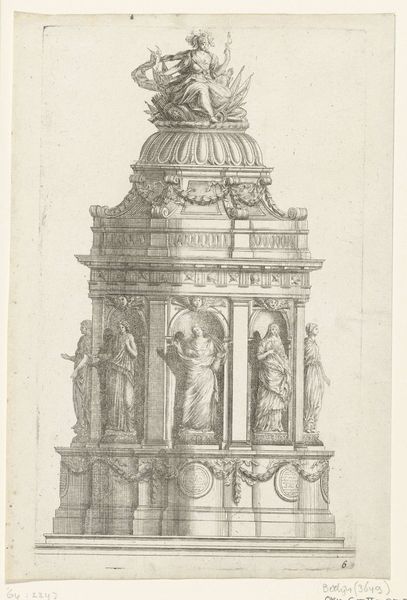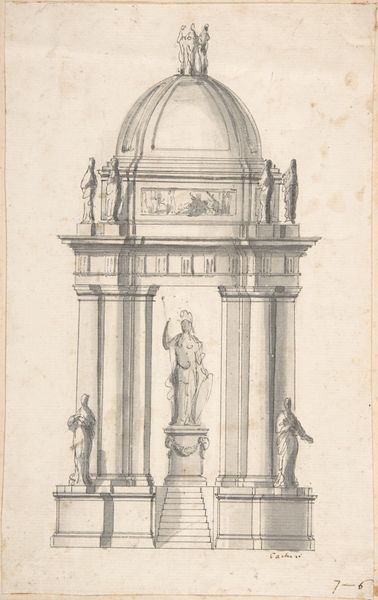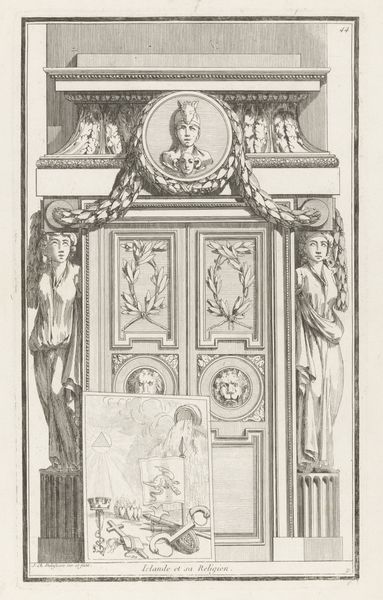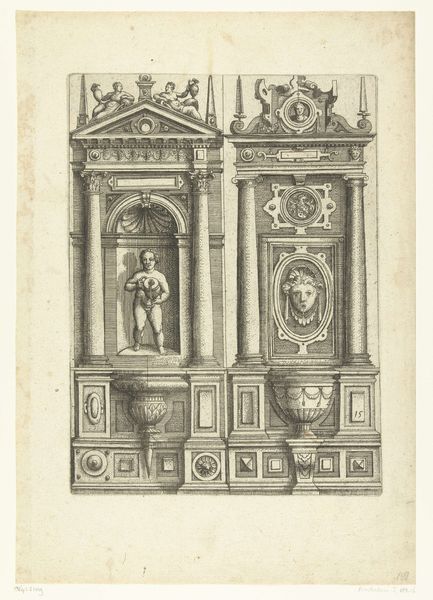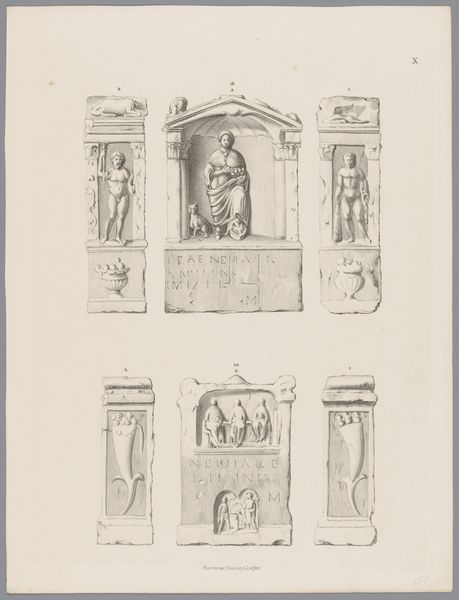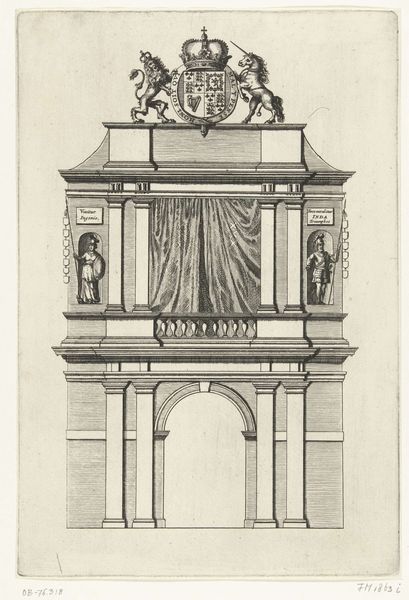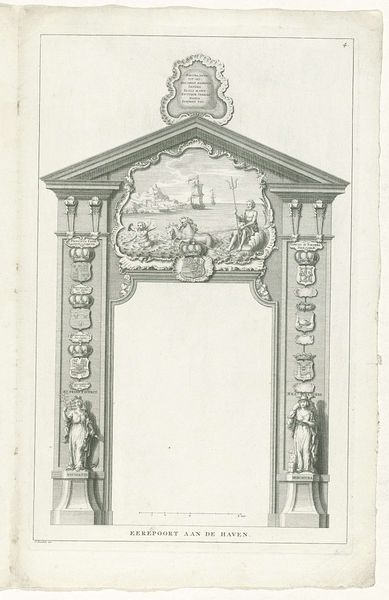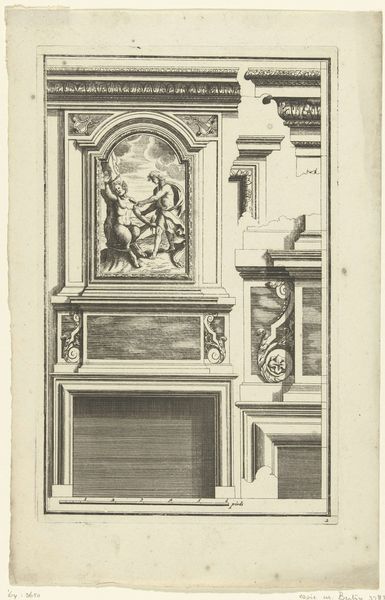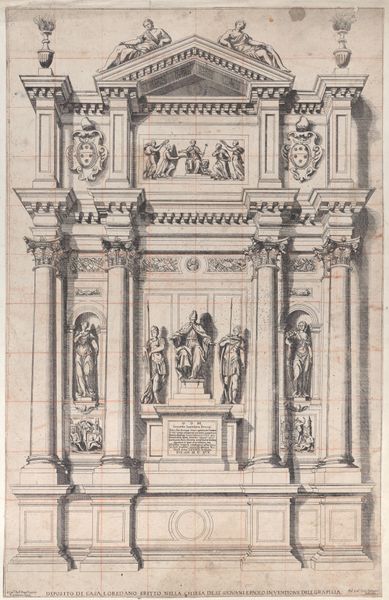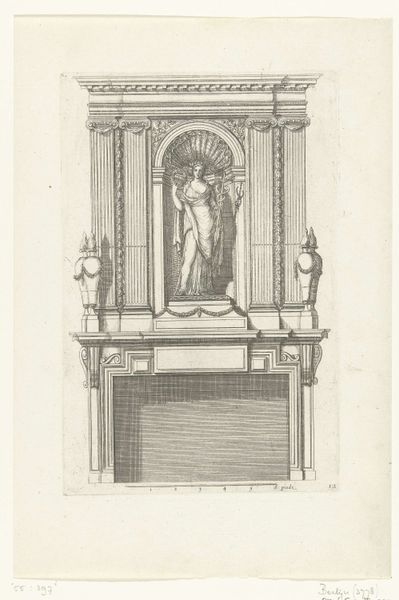
drawing, print, paper, engraving, architecture
#
drawing
# print
#
classical-realism
#
figuration
#
paper
#
geometric
#
italian-renaissance
#
engraving
#
architecture
Dimensions: height 215 mm, width 239 mm
Copyright: Rijks Museum: Open Domain
Curator: Here we have "Facade with Caryatids," a print attributed to Marcantonio Raimondi, created sometime between 1502 and 1534. It's an engraving on paper. Editor: The initial impression is striking. There's a sense of profound stillness, even melancholy. The figures, so rigidly placed, emanate an austere beauty. It feels like a monument to forgotten histories, evoking themes of gender and societal structures. Curator: Precisely. Look at the composition. The two tiers, the strict geometry of the architectural elements. It’s a fascinating study in Renaissance ideals of order and proportion, drawing heavily on classical Roman architecture. The use of line is exquisite. Notice how Raimondi varies the density of the hatching to create a sense of depth and shadow. Editor: While I agree about the technical mastery, I’m drawn to what this façade *represents*. Caryatids, women burdened by architectural weight—literally supporting the structure. It speaks to the roles and expectations placed upon women in that era. And that central bust... Curator: That bust creates a strong focal point. Its presence shifts the reading of the facade, doesn't it? The symmetry and clear arrangement around it evokes feelings of stability. Editor: Absolutely, but the idealized portrayal and her prominent placement also suggest themes of power and authority. Consider the period. We must also consider how these depictions served political and social functions— reinforcing existing hierarchies or perhaps subtly subverting them. Who was this “ideal” woman Raimondi had in mind? Curator: That tension, I think, is what makes the work so compelling. The technical precision versus the more ambiguous narrative. The figures stand guard, and it makes you think about power as a set of aesthetic choices. Editor: And that choice becomes a social statement. Curator: Yes. Looking at Raimondi’s façade with this lens, we start to observe its layered complexity. Editor: Layers that resonate through history. This façade mirrors not just classical ideals, but also, in its rigidity and constructed nature, prompts us to investigate deeper structural inequalities.
Comments
No comments
Be the first to comment and join the conversation on the ultimate creative platform.
